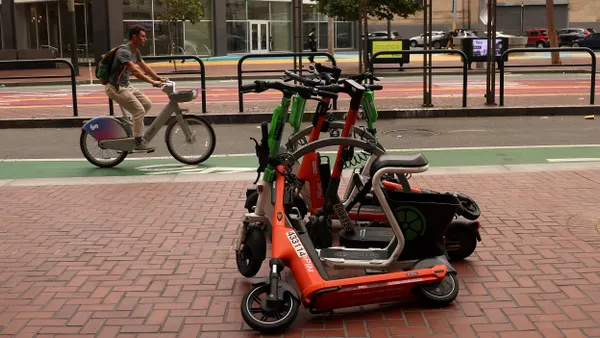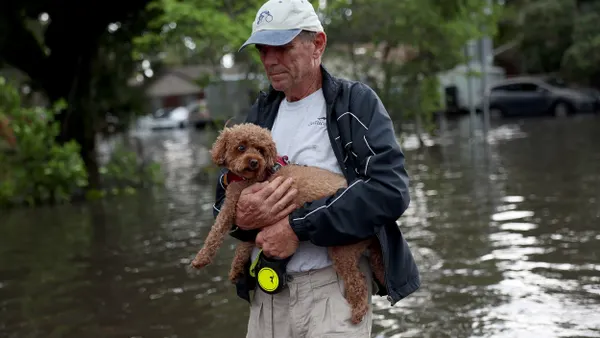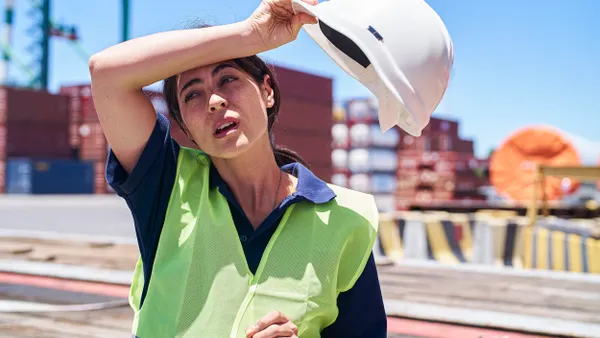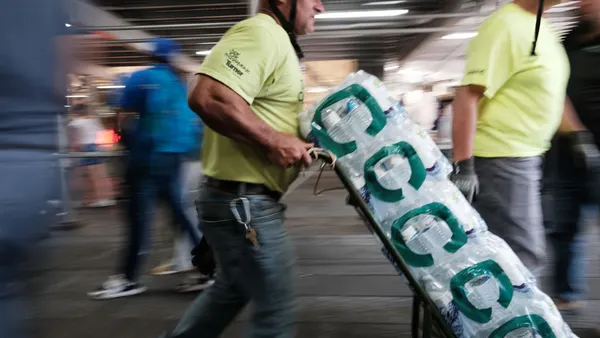Dive Brief:
- Visa released new data on Thursday that found contactless transactions for transit fares increased 187% through the end of June, up from an all-time global low in April. The company now works with more than 500 cities globally to implement or expand contactless payment solutions.
- To further engage in this trend, Visa announced a new global partnership agreement with Cubic Transportation Systems to "enable the delivery of next generation fare payments and new mobility solutions to Cubic’s customers based on Visa’s global payment standards and frameworks," according to a company press release.
- Visa also announced a milestone of 150 total partners in its Visa Ready for Transit certification program, up from 100 partners in October 2019. The Visa Ready for Transit program fosters collaboration with fare system solutions providers and consultancies to simplify transit agencies' implementation of contactless fare systems.
Dive Insight:
Contactless payment offerings had grown in popularity, particularly in the retail space, long before the onset of the coronavirus pandemic. From March 2019 to March 2020, tap-to-pay penetration grew 150% before dropping to its global all-time low as economies shut down under stay-at-home orders, according to Visa.
Now, as transit agencies struggle with record-low ridership amid the pandemic, Visa officials say contactless fare payment systems are being increasingly considered and implemented as a tool to encourage ridership and promote safe riding environments.
Most recently, the company worked with the California Department of Transportation (Caltrans) and Monterey-Salinas Transit (MST) to implement a contactless payment solution across the MST system, marking a first-of-its-kind initiative in the State of California.
Josh Martiesian, senior director of transit for North America at Visa, told Smart Cities Dive that the MTS initiative and others like it can be a "game-changer" as transit agencies work through coronavirus concerns, most notably by alleviating the need to handle cash and reducing congestion at the farebox.
"The more options they can make for riders to use contactless and digital payments, it makes it easier on their employers [by] not having to interact with that cash or interact as much the way they had done in a pre-COVID environment," he said.
While the benefits of and interest in contactless payments are apparent across the transportation industry, there are barriers to consider, including how to ensure unbanked and underbanked transit riders have access to payment options. To mitigate this concern, Visa offers solutions including pre-purchase products for these populations "to enter the financial services little by little" Ana Reiley, global head of delivery in urban mobility at Visa, told Smart Cities Dive.
Another barrier some agencies face is a lack of capital to invest in the proper fare box infrastructure for contactless solutions — especially now. The pandemic has left many U.S. agencies "hemorrhaging money" — New York's Metropolitan Transportation Authority, for example, is losing $800 million a month to the pandemic — and an investment in contactless payment solutions may be hard to justify amid budgetary restraints.
Martiesian said the Visa Ready Transit program has helped streamline tech build and standards to simplify procurement processes for transit agencies, which can make the investment easier on cities. And compared to legacy fare collection processes, "generally moving customers and riders over to digital payments can provide some benefits [to agencies]," he said.
Both Martiesian and Reiley suggested interest in contactless fare payments will continue to grow globally, just as it did before COVID-19 — but this time, the benefits apply not only to transit agencies and riders, but to the economy at large.
"Now that every economy has been severely impacted by the effects of COVID-19, it’s more important than ever to make sure that the urban transportation industry is as efficient — cost efficient but also efficient in terms of uses — as possible," Reiley said. "The [use] of technology and of digital payments is one way to get there."










